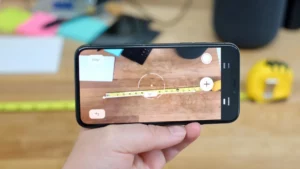Android notification icons list has always puzzled me. Don’t worry! It is safe to go about your business without worrying about your back being exposed.
The Android status bar serves as a notice board for your phone. With this icon, you can keep track of everything that’s going on in your life at a glance. It also notifies you of any new texts you’ve gotten, any likes or comments on your Instagram posts, and any live broadcasts from other Instagram users. This can be a bit overwhelming, but notifications can become disorganized and messy if they aren’t cleaned frequently.
It’s common for people to confuse the Status Bar and the android notification icons list; however, they are not!
The status bar and android notification icons list are two separate features on an Android smartphone, each with its particular purpose. Time, battery level, and network signal strength are all shown in this band at the top of the screen. There are no shortcuts to Bluetooth, Airplane Mode, Rotation Off, and Wi-Fi in the Quick access bar. You may get notifications in the status bar.
The Notification Bar, on the other hand, displays all of your alerts. A list of notifications lined up like a curtain in the status bar will make this apparent. You can see notifications from various apps, phone systems, Whatsapp messages, Alarm Clock Reminders, Instagram updates, and so on when you slide down the notification bar.
You may also reply to messages sent via Whatsapp, Facebook, and Instagram directly from the Notification Bar.
Our quality of life has been greatly enhanced thanks to technological advancements.
Android notification icons list [EXPLAINED]
Android Status Bar and android notification icons list will be the subject of our discussion today because they can be a little tough to grasp.
A-List of Android Icons and their Uses:
Airplane Mode
As a special feature, the airplane mode blocks all wireless connections. When you turn on airplane mode, you normally cannot make or receive calls, texts, or other communications.
Mobile Data
The 4G/3G service on your mobile device is activated by turning on the Mobile Data icon. When this icon is highlighted, your device is online, and the strength of the signal is shown as bars.
Wi-Fi Icon
The Wi-Fi icon tells if you’ve connected to a network. As a bonus, it shows how stable our phone’s radio waves are receiving.
Flashlight Icon
You can detect if your phone’s flashlight is on by looking at the light coming from the back of the phone.
R Icon
The small R icon on your Android device represents the roaming service. If you see this message, your phone has connected to a cellular network that is not covered by your mobile service provider’s network.
You may or may not lose internet connectivity if this signal occurs.
Blank Triangle Icon
This icon represents Roaming Service, which is identical to the R Icon. An older Android handset is more likely to have this indicator than a newer one.
Reading Mode
On most modern Android devices, this feature is usually present. It does exactly what it says on the tin. It enables reading on your phone to be a more enjoyable experience by adopting grayscale mapping, which calms human vision.
Lock Screen Icon
You can use this icon to lock your phone’s screen without having to use the lock button or power button on the device.
GPS Icon
Using GPS, cell networks, and other technologies, your phone can determine your precise location if you’ve highlighted this indicator.
Auto-Brightness Icon
If this option is enabled, the display’s brightness will automatically adjust based on the surrounding lighting conditions. This feature improves visibility while saving battery life when used in the daytime.
Bluetooth icon
You can now share media files and other data with a computer, tablet, or other Android devices wirelessly if the Bluetooth icon is highlighted. It’s also possible to link to other devices like computers and automobiles.
Eye Symbol Icon
You should not panic if you see this distinguishing emblem. Smart Stay is a feature that keeps your screen from turning dark while you’re working on something on it. This is a common icon on Samsung devices, although you can turn it off in the settings menu.
Screenshot Icon
You’ve captured a screenshot by simultaneously hitting the power button and volume down button, as indicated by the photo-like icon in your status bar. By swiping the notice away, you can eliminate this alert.
Signal strength
The Signal Bars indicator shows how strong your phone’s signal is. There are just two or three bars in weak networks, but in strong networks, there are many more.
G, E, and H Icons
These three icons represent the Internet connection and data plan speeds.
The slowest is the G sign for General Packet Radio Service, which is the slowest of the others. The appearance of this G in your status bar is not something you want to happen.
“E” stands for enhanced data rates for GMS evolution; it’s also known as EDGE, which stands for Enhanced Data Rates for GMS.
Finally, let’s talk about the H icon. HSPDA, or High-Speed Downlink Packet Access, is another name for 3G, which is far faster than the other two options.
H+, the upgraded version, is quicker than previous versions, although it’s still slower than 4G.
Priority Mode Icon
A star denotes the Priority setting. Notifications from contacts who have been added to your favorites or priority list are shown by this icon. Use this feature if you’re too busy or don’t feel like taking care of everyone else’s needs right now.
NFC Icon
You can enable NFC, or Near Field Communication, by the N symbol. Your smartphone can wirelessly share and exchange media files and data by positioning two NFC-enabled devices nearby. You can also use a Wi-Fi switch or connection settings to turn off this feature.
A Phone Headset Icon with Keyboard
The TTY (Teletypewriter) mode is activated when this light is on. This function is only available to those who are deaf or otherwise unable to communicate. This technology makes communication easier by allowing transmissions to be made on the go.
Satellite Dish Icon
You can enable the GPS functionality via this indicator, which has the same function as the Location icon. To turn this function off, go to the Location settings on your phone or tablet.
No Parking sign
This prohibited sign bans nothing. Just because you’re in a restricted network area doesn’t mean that your cellular connection isn’t weak or non-existent.
A phone call will not be possible under these circumstances. Text messaging will not be possible either.
Alarm Clock Icon
As soon as you see the “alarm clock” indicator on your clock, you have successfully set the alarm. Simply go to the status bar settings and un-check the alarm clock button.
An Envelope
Seeing an envelope in the notification box shows that a new email or text message has been received (SMS).
System Alert Icon
Whenever you see the System Alert Icon, you can be sure that a new System Update or other important notifications have arrived.
There are a lot of icons to learn about, so don’t worry about it. It is safe to go about your business without worrying about your back being exposed. With any luck, this list of Android Icons can aid you in identifying and deciphering what they mean to you. You should now have a better understanding of the unfamiliar symbology. Please leave your opinions in the comments area below.



![Android notification icons list [EXPLAINED] android notification icons list](https://www.techmaze.net/wp-content/uploads/2022/07/Android-notification-icons-list-EXPLAINED.png)